Showing Spotlights 1417 - 1424 of 2851 in category All (newest first):
 Researchers have exploited the extraordinary electrical and mechanical properties of graphene to create a very efficient electrical/sound transducer. This experimental graphene loudspeaker, without any optimized acoustic design, is simple to make and already performs comparably to or better than similar sized commercial counterparts, and with much lower power consumption. Most speakers available today reproduce sound via a mechanical diaphragm, which is displaced oscillatorily during operation. A wide-band audio speaker typically requires significant damping to broaden the response. Even without optimization, the graphene speaker is able to produce frequency response across the whole audible region, comparable or superior to performance of conventional-design commercial counterparts.
Researchers have exploited the extraordinary electrical and mechanical properties of graphene to create a very efficient electrical/sound transducer. This experimental graphene loudspeaker, without any optimized acoustic design, is simple to make and already performs comparably to or better than similar sized commercial counterparts, and with much lower power consumption. Most speakers available today reproduce sound via a mechanical diaphragm, which is displaced oscillatorily during operation. A wide-band audio speaker typically requires significant damping to broaden the response. Even without optimization, the graphene speaker is able to produce frequency response across the whole audible region, comparable or superior to performance of conventional-design commercial counterparts.
Mar 21st, 2013
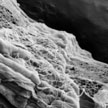 During the past few decades, nanotechnology has had tremendous advances in several areas of research and development. Every week we are witnesses to hundreds of articles and scientific publications reporting new pathways for nanoparticle/nanofiber production, modification and use in modern and high-tech applications. In this respect, the pulp and paper industry has not been absent of this development, which has motivated massive research about nanocellulose. This wonderful material, which is synthesized naturally in wood, is composed of nanofibrils with widths usually less than 20 nm, high aspect ratio and remarkable strength.
During the past few decades, nanotechnology has had tremendous advances in several areas of research and development. Every week we are witnesses to hundreds of articles and scientific publications reporting new pathways for nanoparticle/nanofiber production, modification and use in modern and high-tech applications. In this respect, the pulp and paper industry has not been absent of this development, which has motivated massive research about nanocellulose. This wonderful material, which is synthesized naturally in wood, is composed of nanofibrils with widths usually less than 20 nm, high aspect ratio and remarkable strength.
Mar 20th, 2013
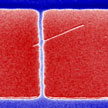 Plant viruses have recently become the focus of intense research in the field of nanotechnology due to their promising applications as biotemplates for bottom-up nanofabrication. In order to build nanoscale devices based on plant viruses it is necessary to incorporate the virus with standard micro- and nanofabrication techniques - something that still remains a considerable challenge. In new work, researchers have now shown that TMV particles are compatible with electron beam lithography (EBL) processes and can be integrated in nanostructures made of positive and also of negative EBL tone resists.
Plant viruses have recently become the focus of intense research in the field of nanotechnology due to their promising applications as biotemplates for bottom-up nanofabrication. In order to build nanoscale devices based on plant viruses it is necessary to incorporate the virus with standard micro- and nanofabrication techniques - something that still remains a considerable challenge. In new work, researchers have now shown that TMV particles are compatible with electron beam lithography (EBL) processes and can be integrated in nanostructures made of positive and also of negative EBL tone resists.
Mar 19th, 2013
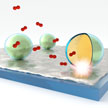 Conventional probing methods for localized surface properties often rely on ultra-high vacuum conditions. Consequently, approaches such as scanning tunneling microscopy have difficulties to resolve surface changes under realistic reaction conditions. Tip-enhanced Raman spectroscopy can investigate arbitrary substrates and more diverse reaction environments but suffers from weak Raman scattering signals. Also, the fabrication of robust, reproducible, and highly enhancing tips is still challenging. Researchers have now presented a novel platform for the optical detection of localized chemical reactions on surfaces that can help overcome these difficulties by offering a sensitive, reliable, and easy-to-implement technique to probe local chemical reactions while they occur under diverse environmental conditions.
Conventional probing methods for localized surface properties often rely on ultra-high vacuum conditions. Consequently, approaches such as scanning tunneling microscopy have difficulties to resolve surface changes under realistic reaction conditions. Tip-enhanced Raman spectroscopy can investigate arbitrary substrates and more diverse reaction environments but suffers from weak Raman scattering signals. Also, the fabrication of robust, reproducible, and highly enhancing tips is still challenging. Researchers have now presented a novel platform for the optical detection of localized chemical reactions on surfaces that can help overcome these difficulties by offering a sensitive, reliable, and easy-to-implement technique to probe local chemical reactions while they occur under diverse environmental conditions.
Mar 18th, 2013
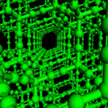 Carbon is the fourth-most-abundant element in the universe and, depending on the arrangements of carbon atoms, takes on a wide variety of forms, called allotropes. Carbon allotropes exhibit unique properties of strength and electrical conductivity. Solid carbon at room temperature has two classical structures: diamond and graphite. In 1985 the discovery of the existence of a third and new carbon allotrope containing sixty perfectly symmetrically arranged carbon atoms (C60) meant a major breakthrough and opened a novel field of carbon nanochemistry. Then, in 1991, carbon nanotubes were discovered and graphene in 2004. Now, a research group in China has designed a novel carbon allotrope they've named D-carbon.
Carbon is the fourth-most-abundant element in the universe and, depending on the arrangements of carbon atoms, takes on a wide variety of forms, called allotropes. Carbon allotropes exhibit unique properties of strength and electrical conductivity. Solid carbon at room temperature has two classical structures: diamond and graphite. In 1985 the discovery of the existence of a third and new carbon allotrope containing sixty perfectly symmetrically arranged carbon atoms (C60) meant a major breakthrough and opened a novel field of carbon nanochemistry. Then, in 1991, carbon nanotubes were discovered and graphene in 2004. Now, a research group in China has designed a novel carbon allotrope they've named D-carbon.
Mar 15th, 2013
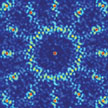 Organic solar cells are regarded as an emerging technology to become one of the low-cost thin-film alternatives to the current dominating silicon photovoltaic technology, due to their intrinsic potential for low-cost processing (high-speed and at low temperature). However, it is generally believed that the PCE needs to be improved to above 10% in order for organic solar cells to become truly competitive in the marketplace. Currently, the best reported PCE, achieved in laboratories, lies in the range of 6.7% to 7.6% for molecular, and 8.3% to 10.6% for polymeric OPVs.
Organic solar cells are regarded as an emerging technology to become one of the low-cost thin-film alternatives to the current dominating silicon photovoltaic technology, due to their intrinsic potential for low-cost processing (high-speed and at low temperature). However, it is generally believed that the PCE needs to be improved to above 10% in order for organic solar cells to become truly competitive in the marketplace. Currently, the best reported PCE, achieved in laboratories, lies in the range of 6.7% to 7.6% for molecular, and 8.3% to 10.6% for polymeric OPVs.
Mar 13th, 2013
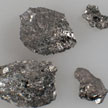 Strange new materials experimentally identified just a few years ago are now driving research in condensed-matter physics around the world. Tthese "strong 3-D topological insulators" - TIs for short - are seemingly mundane semiconductors with startling properties. Topological insulators offer unique opportunities to control electric currents and magnetism, and are promising materials for future spintronic applications or could provide access to novel, fascinating physical phenomena. While so far, only synthetic TIs had been experimentally identified, researchers in Germany report the discovery of a natural occurring topological insulator: the mineral Kawazulite.
Strange new materials experimentally identified just a few years ago are now driving research in condensed-matter physics around the world. Tthese "strong 3-D topological insulators" - TIs for short - are seemingly mundane semiconductors with startling properties. Topological insulators offer unique opportunities to control electric currents and magnetism, and are promising materials for future spintronic applications or could provide access to novel, fascinating physical phenomena. While so far, only synthetic TIs had been experimentally identified, researchers in Germany report the discovery of a natural occurring topological insulator: the mineral Kawazulite.
Mar 11th, 2013
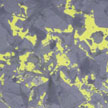 Unlike silicon, graphene lacks an electronic band gap and therefore has no switching capability; which is essential for electronics applications. Opening an energy gap in graphene's electron energy spectrum is therefore a critical prerequisite for instance for creating graphene transistors. One method of obtaining a bandgap is to use reduced graphene oxide, an inexpensive material with an industrial-scalable production route. Researchers have now managed to grow and extend graphene oxide out of graphene oxide flake templates.
Unlike silicon, graphene lacks an electronic band gap and therefore has no switching capability; which is essential for electronics applications. Opening an energy gap in graphene's electron energy spectrum is therefore a critical prerequisite for instance for creating graphene transistors. One method of obtaining a bandgap is to use reduced graphene oxide, an inexpensive material with an industrial-scalable production route. Researchers have now managed to grow and extend graphene oxide out of graphene oxide flake templates.
Mar 8th, 2013
 Researchers have exploited the extraordinary electrical and mechanical properties of graphene to create a very efficient electrical/sound transducer. This experimental graphene loudspeaker, without any optimized acoustic design, is simple to make and already performs comparably to or better than similar sized commercial counterparts, and with much lower power consumption. Most speakers available today reproduce sound via a mechanical diaphragm, which is displaced oscillatorily during operation. A wide-band audio speaker typically requires significant damping to broaden the response. Even without optimization, the graphene speaker is able to produce frequency response across the whole audible region, comparable or superior to performance of conventional-design commercial counterparts.
Researchers have exploited the extraordinary electrical and mechanical properties of graphene to create a very efficient electrical/sound transducer. This experimental graphene loudspeaker, without any optimized acoustic design, is simple to make and already performs comparably to or better than similar sized commercial counterparts, and with much lower power consumption. Most speakers available today reproduce sound via a mechanical diaphragm, which is displaced oscillatorily during operation. A wide-band audio speaker typically requires significant damping to broaden the response. Even without optimization, the graphene speaker is able to produce frequency response across the whole audible region, comparable or superior to performance of conventional-design commercial counterparts.
 Subscribe to our Nanotechnology Spotlight feed
Subscribe to our Nanotechnology Spotlight feed





